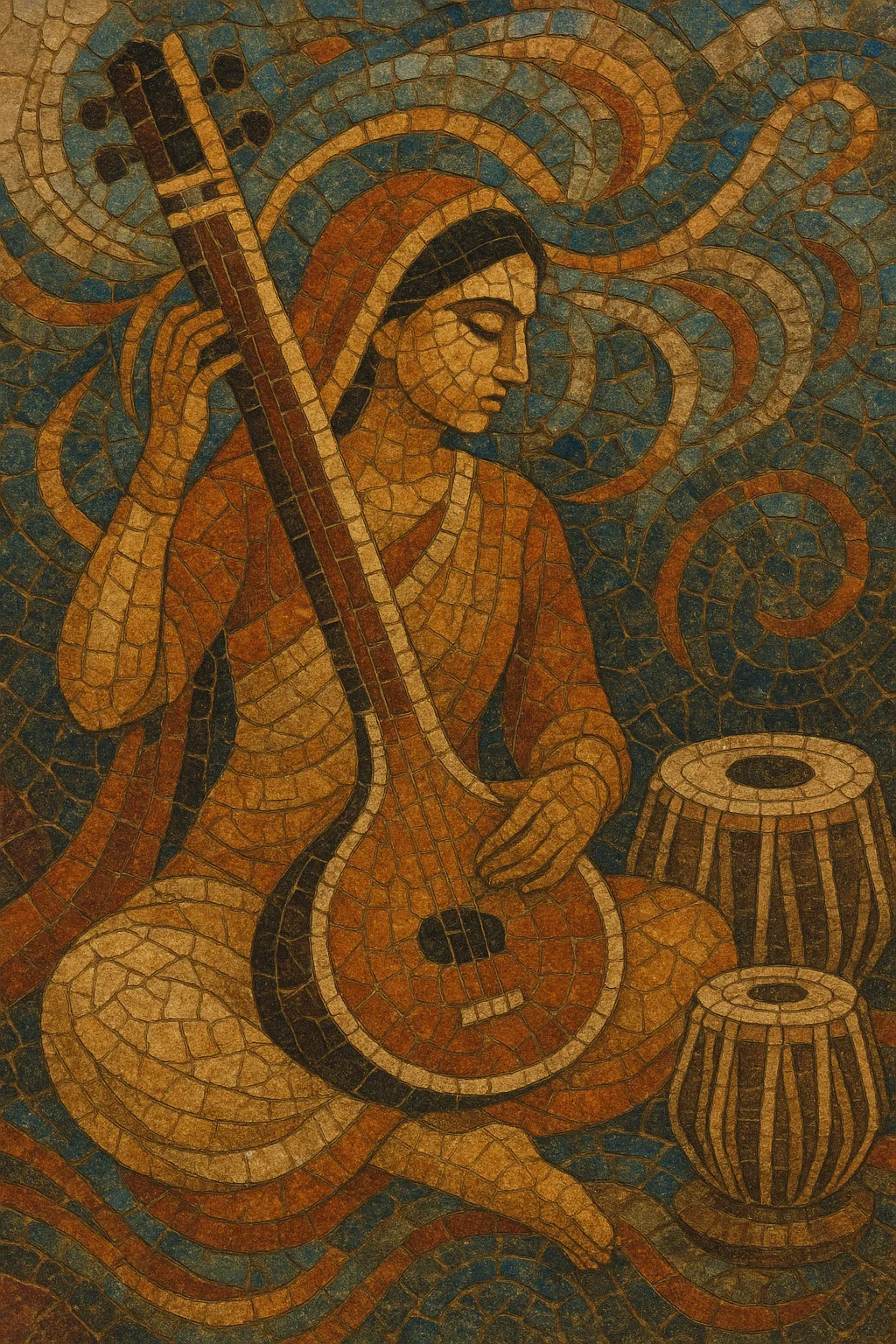South Asian classical music is the art-music tradition of the Indian subcontinent built around raga (melodic frameworks) and tala (cyclical rhythmic structures). It emphasizes microtonal nuance, ornamentation (gamaka), and a continuous drone, producing a highly expressive, meditative, and often devotional soundworld.
The tradition cohered from ancient liturgical and courtly practices and later diverged into two major streams: Hindustani (North Indian) and Carnatic (South Indian). Both systems share the raga–tala grammar but differ in repertoire, performance format, instrumentation, and stylistic emphasis. Improvisation is central in both, balancing formal compositions with spontaneous exploration.
South Asian classical music traces its conceptual origins to ancient South Asian liturgy and theory. Early foundations appear in Vedic chant and temple/ritual music, with systematic codification in treatises like the Natya Shastra (1st–2nd century CE). Later, Sarngadeva’s Sangita Ratnakara (13th century) summarized prevailing theory on raga, tala, and performance, marking a key milestone for the classical tradition.
Between the late medieval and early modern periods, the tradition bifurcated:
• Hindustani (North Indian) practice evolved in a pluralistic courtly milieu that included Persian cultural influence under the Delhi Sultanate and Mughal courts, shaping forms like khayal and instrumental idioms for sitar, sarod, and bansuri. • Carnatic (South Indian) practice remained more insulated from Persian influence, developing a dense, composition-rich repertoire (kritis, varnams) anchored by the Trinity of composers (Tyagaraja, Muthuswami Dikshitar, Syama Sastri) and intricate rhythmic artistry.Through the 16th–19th centuries, courts and temples nurtured performer lineages (gharanas and bani-s), refined pedagogy (guru–shishya parampara), and expanded raga/tala vocabularies. Dhrupad, khayal, and thumri flourished in the North; the kriti-centered concert format with alapana–niraval–kalpanaswara matured in the South.
From the late 19th century onward, scholars and performers systematized pedagogy, notation, and raga catalogs. The 20th century saw radio, recording, and festivals broaden audiences; artists such as M. S. Subbulakshmi, Ravi Shankar, and Bismillah Khan became global ambassadors. Today, Hindustani and Carnatic traditions thrive in concert halls and institutions worldwide, influencing film music, jazz, and global fusion while preserving rigorous classical disciplines.


